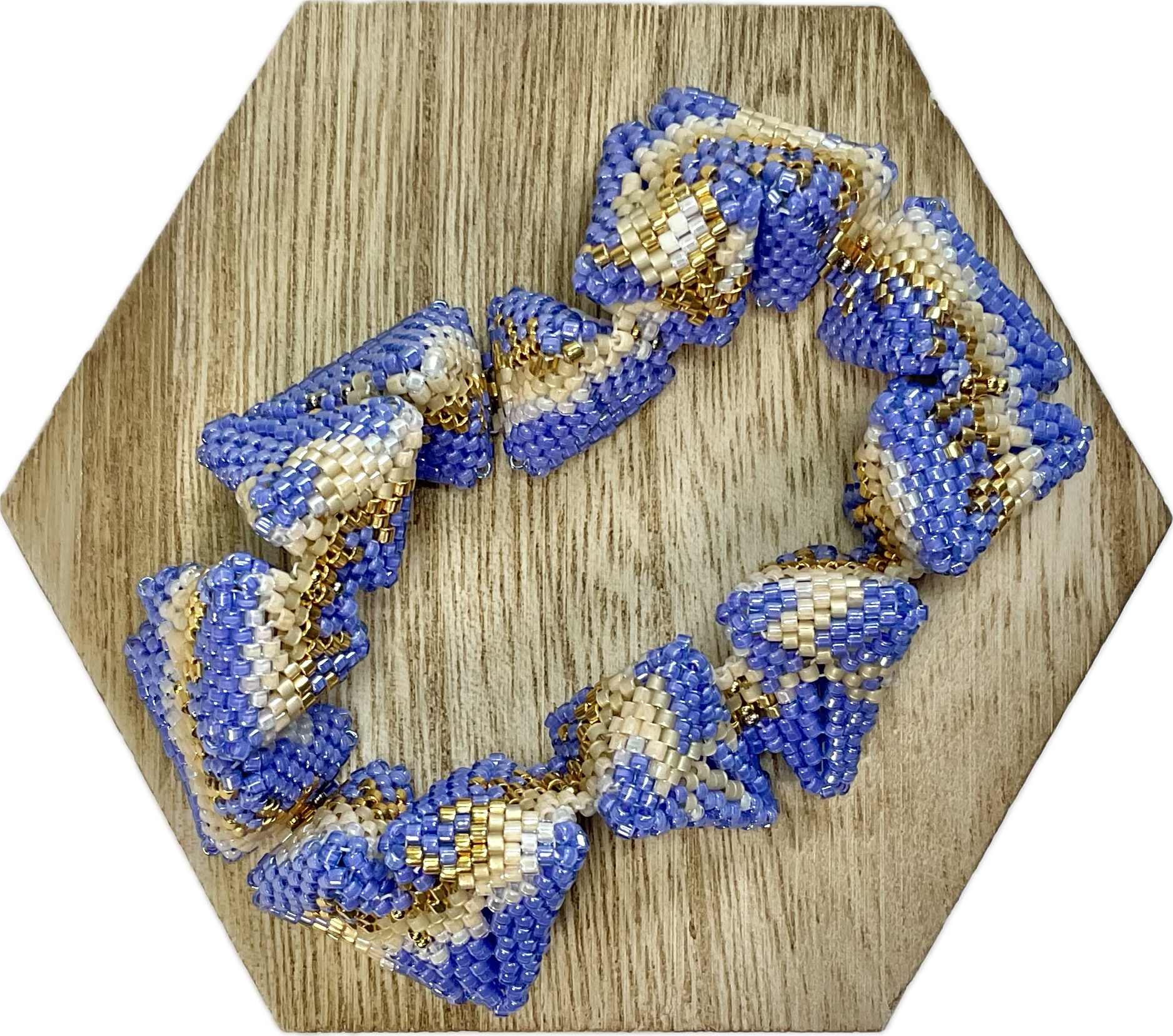 Image 1 of 5
Image 1 of 5

 Image 2 of 5
Image 2 of 5

 Image 3 of 5
Image 3 of 5

 Image 4 of 5
Image 4 of 5

 Image 5 of 5
Image 5 of 5






Ouroboros Fidget
This sculpture is a type of fidget or machine called a kaleidocycle. Most of these fidgets are six symmetrical pyramids joined together in a ring by hinges. This cycle is unique because its parts are not perfectly symmetrical, which gives it more of an elongated shape. It measures about 4” across at the widest.
This kaleidocycle embodies the ancient image of the ouroboros, or the snake that eats its own tail. The golden dragon image winds across the surface of the kaleidocycle asymmetrically, an unending loop. This kaleidocycle is also a möbius cycle which means that it never lies flat. Some part of it is always mid turn.
One of a kind.
This sculpture is a type of fidget or machine called a kaleidocycle. Most of these fidgets are six symmetrical pyramids joined together in a ring by hinges. This cycle is unique because its parts are not perfectly symmetrical, which gives it more of an elongated shape. It measures about 4” across at the widest.
This kaleidocycle embodies the ancient image of the ouroboros, or the snake that eats its own tail. The golden dragon image winds across the surface of the kaleidocycle asymmetrically, an unending loop. This kaleidocycle is also a möbius cycle which means that it never lies flat. Some part of it is always mid turn.
One of a kind.
This sculpture is a type of fidget or machine called a kaleidocycle. Most of these fidgets are six symmetrical pyramids joined together in a ring by hinges. This cycle is unique because its parts are not perfectly symmetrical, which gives it more of an elongated shape. It measures about 4” across at the widest.
This kaleidocycle embodies the ancient image of the ouroboros, or the snake that eats its own tail. The golden dragon image winds across the surface of the kaleidocycle asymmetrically, an unending loop. This kaleidocycle is also a möbius cycle which means that it never lies flat. Some part of it is always mid turn.
One of a kind.
